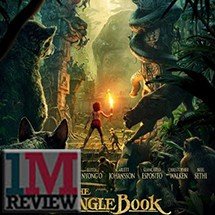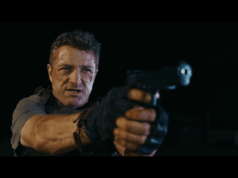“The voice acting in this film is truly a marvel”
Jon Favreau’s The Jungle Book is probably the greatest visual achievement since James Cameron’s Avatar and that’s a comparison I do not use lightly. For the first time in many years, or perhaps ever, I wished I had seen The Jungle Book on a larger-format screen, or even IMAX; it’s the kind of film that has so much you want to take in that the average TV screen or theater seems it can barely contain everything the human eye has the potential to see. Films like The Jungle Book and Avatar work exhaustively to show not only the capabilities of modern cinematic technology but also the realms of possibility when it comes to creating an entire world you feel like you’re escaping to. The visual wonderment of The Jungle Book is just about bar-none.
We’re thrown into the deep regions of the jungle and focus on the man-cub Mowgli (Neel Sethi), who has grown up without parental supervision and been raised by a forest of talking animals, particularly a wolf named Raksha (voiced by Lupita Nyong’o) and the wolf-pack’s leader Akeela (Giancarlo Esposito). One day, a Bengal tiger named Shere Khan (Idris Elba) sees Mowgli and demands that he leave the jungle, due to his human scent possibly attracting predators to the community. With no choice but to leave, Mowgli sets course to leave the jungle, with Bagheera (Ben Kingsley), the black panther who first found him, by his side.
- The Jungle Book
- Directed by
Jon Favreau - Cast
Neel Sethi, Bill Murray, Ben Kingsley, Idris Elba - Release Date
15 April 2016 - Steve’s Score: 8/10
*****
Eventually, Mowgli meets Baloo (Bill Murray), a gigantic brown bear who saves his live from a sinister snake and requests payment by way of climbing a steep mountain in order to get a bee-infested hive filled with honey. To Baloo’s surprise, Mowgli actually retrives the honeycomb, but not before getting stung multiple times. This quirky relationship eventually develops into a keen friendship between a wise old bear with experience and a young, spirited boy looking to gain some, especially as the pressure of Shere Khan looms over time.
The voice acting in this film is truly a marvel; rarely am I ever captivated by voice acting in films, but here, every line carries a certain weight by the animal characters who say it and not as if the characters are speaking philosophically. Dialog carries weight by way of enunciation and clarity, which makes every word land with a resounding thud, especially Elba, who owns the role of an antagonistic tiger. Bill Murray is about as genial and warm as you could ever want him, and even Scarlett Johansson gets a phenomenal monologue playing the aforementioned snake, her words landing with a slithering significance and leaving an aura with her venomous vernacular.
It’s sad to say, but the weak link here is newcomer Neel Sethi, who is essentially the sole actor operating in a land created of smoke and mirrors before a series of green-screens and “placeholder” objects. Maybe it’s the anxiety of his debut film role, or the sheer weight of said film role, but for whatever reason, Sethi seems uncomfortable and ill-equipped to handle the more emotional side of the film effectively. He’s brimful with energy, but can’t overcome challenges to be the kind of Mowgli that can stand strong in the film.
While that weak link is fairly strong, and admittedly offsets much of the film, it can’t cripple it because of everything that’s going on here. Beautiful canvases and wide-open areas of the jungle appear like limitless playgrounds for the characters and Favreau works to make use of every corner and crevasse in the newly imagined land. We may roll our eyes at yet another Hollywood remake, but if any story needed to be reimagined in a live-action playground at a time when technology can effectively create humanoids as well as it can create superhero destruction and Godzilla, The Jungle Book isn’t an unreasonable venture nor possibility.







